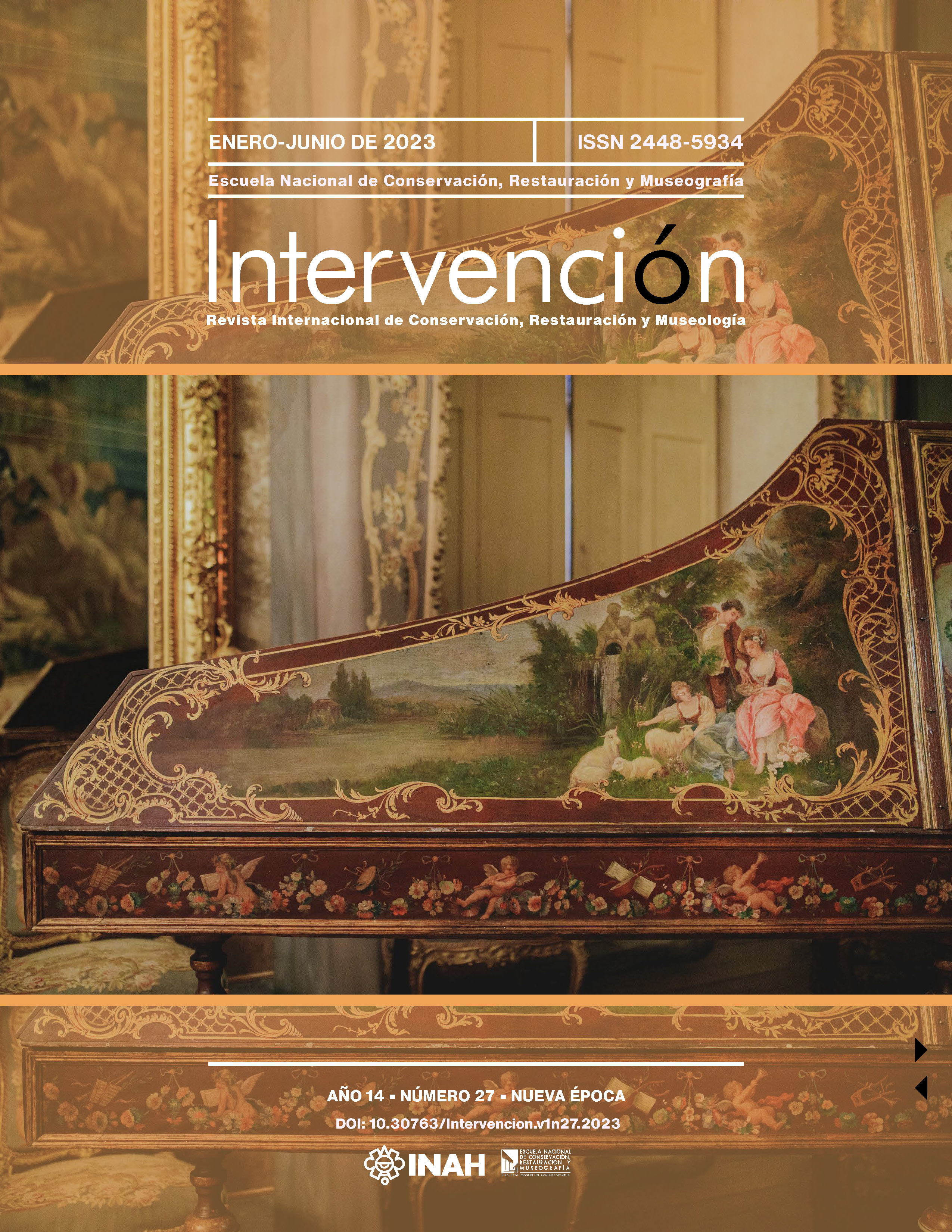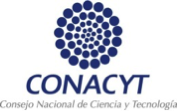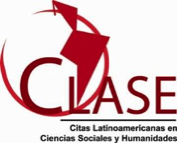Japanese Paper Threads as a Proposal for the Conservation of Pre-Hispanic Cordage.
Evaluation of its Characteristics and Resistance
DOI:
https://doi.org/10.30763/Intervencion.281.v1n27.60.2023Abstract
The following paper presents the results from the physical characterization and subsequent application of yarns made from Japanese paper, whose features and properties in the field of conservation-restoration have proved to be useful for the intervention on archaeological objects of organic origin. This RESEARCH ARTICLE describes the process of thread elaboration as well as the evaluation of its physiomechanical properties through the analysis of mechanical traction, where the thickness of the thread is directly proportional to the force required to generate the thread’s failure, meaning that the properties of the threads can be varied, depending on the specific conservation need.
Downloads
References
Álvarez, B. T. (2018). El papel washi: un derivado vegetal Patrimonio Cultural de la Humanidad. Ecos de Asia. http://revistacultural.ecosdeasia.com/papel-washi-derivado-vegetal-patrimonio-cultural-la-humanidad/
ASTM International. (2022). ASTM D2256 Standard Test Method for Tensile Properties of Yarns by the Single-Strand Method. ASTM Internacional.
Aveleyra, L. (1956). Cueva de la Candelaria. Volumen I. Memorias del Instituto Nacional de Antropología e Historia–Secretaría de Educación Pública.
Bastiand, S. (2000). Producción textil prehispánica. Investigaciones Sociales 4(5), 125-144. https://doi.org/10.15381/is.v4i5.6849
Charrier, J. M. y Hanser, C. (1990). Polymeric Materials and Processing: Plastics, elastomers and composites. Oxford University Press.
Contreras, J., Mainou, L. y Antuna, S. (2012). Alteración de hilos de bordados de seda: modificaciones morfológicas, de color y resistencia mecánica. Intervención. Revista Internacional de Conservación, Restauración y Museología, 2(6), 26-33. https://doi.org/10.30763/Intervencion.2012.6.71
Gear, F. (12 y 13 de abril de 2007). La naturaleza del Washi y su uso en conservación. En Las rutas del papel en el Río de la Plata (pp. 253-265). Centro Americano de Historiadores del Papel.
González, L. (1998). La cueva de la Candelaria. Arqueología Mexicana, Dos siglos de hallazgos, (30), 62-64.
Karuno, H. (2016). Shifu: A Traditional Paper Textile of Japan. En Land, Labor, and the Port. Textile Society of America Symposium Proceedings (pp. 252-261). https://digitalcommons.unl.edu/tsaconf/977/
Horie, C. V. (2013). Materials for conservation. Routledge.
Lagada, J. (1952). El algodón: características de su producción, e industria en el país, su importancia y posibilidades en la economía nacional. Universidad de Buenos Aires.
Larrea, C. (2017). Shifu, el arte tradicional del tejido en papel del Japón. Documentos de Trabajo. Estudios Asiáticos, 1(17), 1-14.
Lockuán, F. (2012). La industria textil y su control de calidad, III. Hilandería.
López, S. M. L., Romano, A. S. y Guinea, V. (2018). Análisis comparativo de propiedades mecánicas de fibras naturales y tecnofacturas arqueológicas: implicancias para la interpretación de prácticas de producción textil en el pasado. MATerialidadeS. Perspectivas actuales en cultura material, 5(5), 22-50. https://ri.conicet.gov.ar/bitstream/handle/11336/64019/CONICET_Digital_Nro.1a938067-7514-4702-a787-b03e10630b20_A.pd-f?sequence=2&isAllowed=y
Mirambel, L. y Sánchez, F. (1986). Materiales arqueológicos de origen orgánico: textiles. Departamento de Prehistoria-Instituto Nacional de Antropología e Historia (Cuadernos de trabajo, 30).
Rubinson, K. A. y Rubinson, J. F. (2001). Análisis instrumental (L. Larrauri Ros, trad.). Pearson Education.
Secretaría de Comercio y Fomento a la Industria. (1991). Norma Mexicana NMX-A-069-1990. Determinación de la carga de ruptura, tenacidad y alargamiento por método de hilo individual. Dirección General de Normas.
Sánchez, G. M. (2017). La conservación de dos fardos funerarios provenientes de contextos arqueológicos: El caso de la cueva del Lazo, Ocozo-coautla, Chiapas y la cueva de la Candelaria, Torreón, Coahuila, México. En L. Bjerregaard y A. Peters (Eds.), PreColumbian Textile Conference VII / Jornadas de Textiles PreColombinos VII, (pp. 405-414). Zea Books. https://digitalcommons.unl.edu/pct7/26/
Stuart, B. H. (2007). Analytical Techniques in Materials Conservation. John Wiley & Sons.
Travel by Mexico. (s. f.). Estado de Coahuila, en la República Mexicana [imagen incrustada]. https://mr.travelbymexico.com/664-estado-de-coahuila
Weitlaner-Johnson, I. (1977). Los textiles de la cueva de la Candelaria, Coahuila. Instituto Nacional de Antropología e Historia (Colección Científica. Arqueología, 51).
Additional Files
Published
How to Cite
Issue
Section
License
Copyright (c) 2023 Instituto Nacional de Antropología e Historia (INAH)

This work is licensed under a Creative Commons Attribution-NonCommercial 4.0 International License.

Atribución-NoComercial 4.0 Internacional
https://creativecommons.org/licenses/by-nc/4.0/deed.es
Usted es libre de:
- Compartir — copiar y redistribuir el material en cualquier medio o formato
- Adaptar — remezclar, transformar y construir a partir del material
Bajo los siguientes términos:
-
Atribución — Usted debe dar crédito de manera adecuada, brindar un enlace a la licencia, e indicar si se han realizado cambios. Puede hacerlo en cualquier forma razonable, pero no de forma tal que sugiera que usted o su uso tienen el apoyo de la licenciante.
-
No Comercial — Usted no puede hacer uso del material con propósitos comerciales.




















